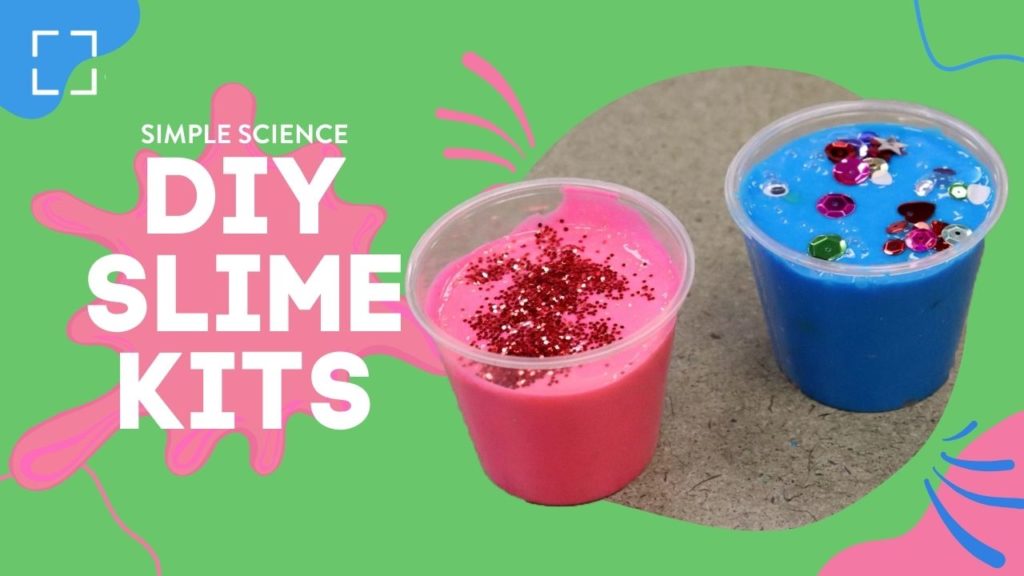Slime may be considered a popular toy, but did you know that it can also be a chemistry experiment? You can make slime at home with just a few simple ingredients! These ingredients undergo a chemical reaction to create the slime we know and love. All you have to do is follow the instructions below. Be sure to talk together about the science behind why this experiment works and don’t be afraid to explore!

Supplies needed
- Measuring utensils
- Medium mixing bowl & spoon
- White or clear school glue
- Water
- Liquid starch
- Optional mix-ins such as food coloring, glitter, or sequins
Instructions
- Measure out ½ cup of your school glue into a medium-sized mixing bowl.
- Measure out ½ a cup of water.
- Pour half of the water onto the glue, and stir well. When it is mixed, add the rest of the water, and mix again.
- Measure out and pour in ¼ cup of liquid starch into your bowl. Mix for several minutes. Your mixture should get slimier as you go. This may be easier to do with your hands!
- *** If your slime is still too sticky, add a few more drops of liquid starch. If your slime is too stiff, add a few more drops of water.
- Add in food coloring or any mix-ins that you want such as glitter, sequins, or foam beads.
- Store your slime in a sealed plastic container with the lid on for it to last the longest.
Questions to ask
- What happens if you slam your slime against the table? What if you just hold the slime and let it go through your fingers? Look below to see why this happens.
- What happens if you add vinegar to slime? Pinch off a small piece, and add a few drops of vinegar in a cup to find out!
- What happens to slime over time? Pinch off a piece, and leave it out in the open air for a few days. Has the slime changed?
How it works
Slime is made through chemistry! Most slime has the same two main ingredients: polyvinyl alcohol (in the glue) and borax (in the liquid starch). When mixed together with water, a chemical reaction occurs, and your slime is formed. Slime is a great example of polymers. Polymers are made of long chains of identical molecules. Other common polymers include rubber, starch, and even DNA!
Slime is also an example of a non-Newtonian fluid, meaning its viscosity (resistance to flow) can change. This is why sometimes slime seems like a solid and sometimes it is more like a liquid. Slime can be picked up like a solid, but it also takes the shape of its container like a liquid. The amount of glue, water, and borax in the slime all affect its viscosity and how solid or liquid the slime acts.




